Purple flowers have long been a symbol of royalty, spirituality, and imagination. Their unique color conveys a sense of mysticism and intrigue. In this article with Impeccable Nest, we will explore the fascinating symbolism and meaning behind purple flowers.
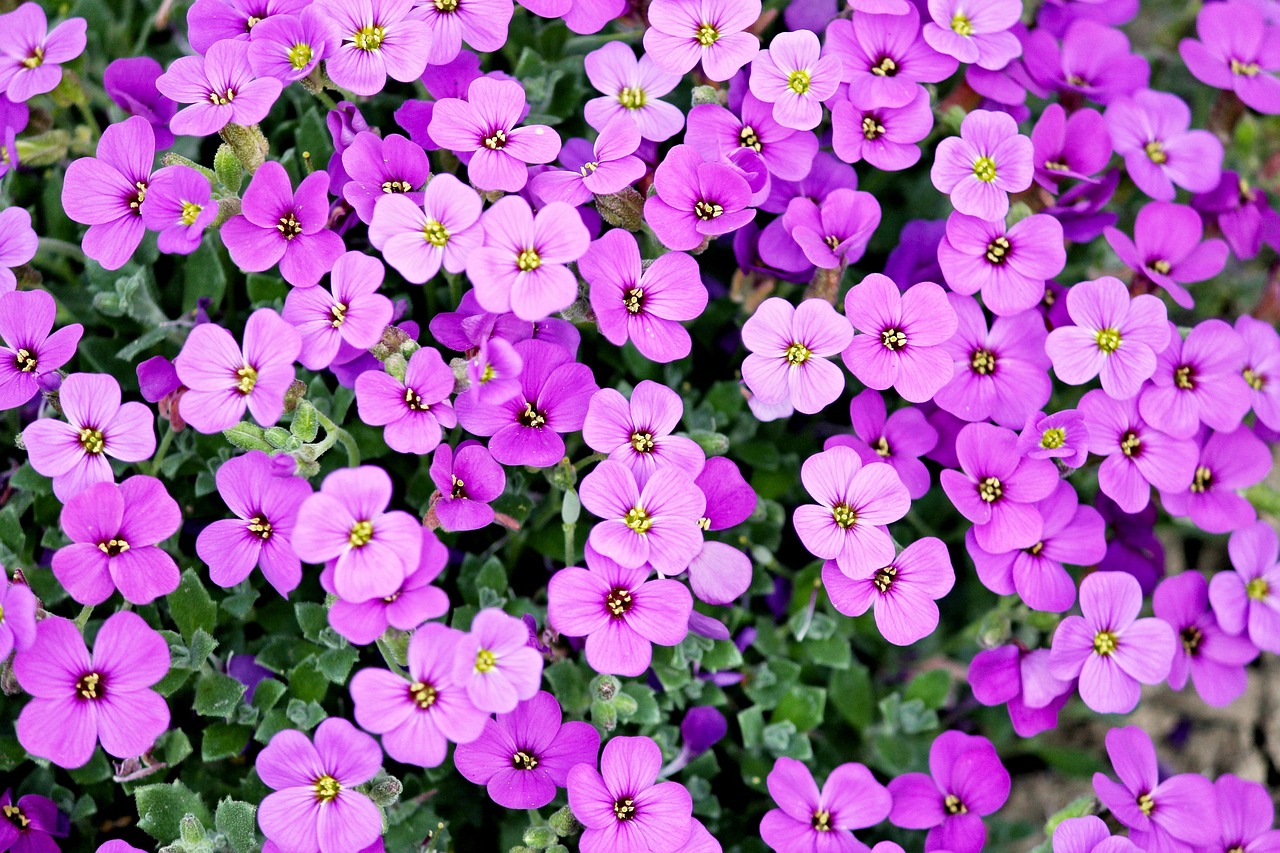
Purple Flowers Meaning: Unveiling the Mystery
Wisdom and Creativity
Purple flowers have long been associated with a deep and profound meaning, often conveying a sense of wisdom, inner knowledge, and creative expression. This symbolism can be seen in many different types of purple flowers, such as irises, orchids, and lilacs.
One of the main reasons why purple flowers are so closely linked to these concepts is because of their rare and exotic nature. The color purple has historically been associated with royalty and luxury, as it was once a very expensive dye to produce. This rarity and exclusivity give purple flowers a certain mystique and convey a sense of ancient esoteric mysteries.
In addition to their rarity, purple flowers also hold a strong association with imagination and right brain activity. This is due to the fact that the color purple is often associated with creativity and artistic expression. In many cultures, purple is seen as a color that stimulates the mind and encourages creative thinking. This connection to the right brain gives purple flowers a mystical and spiritual symbolism, representing the enlightened, visionary energy that comes from tapping into one’s creative potential.
The symbolism of purple flowers can also be traced back to ancient civilizations and spiritual traditions. In Greek mythology, the iris flower was believed to be a symbol of communication between gods and humans, as well as a representation of wisdom and knowledge. In Hinduism, the purple lotus flower is associated with spiritual awakening and enlightenment.
The meaning of purple flowers is deeply rooted in a sense of mystery, creativity, and spirituality. They serve as a reminder to tap into our inner wisdom and embrace our unique creative abilities. Whether used in bouquets, gardens, or as decorative elements, purple flowers add a touch of enchantment and magic to any setting. So next time you come across a beautiful purple bloom, take a moment to appreciate its deeper meaning and the powerful symbolism it holds.
Royalty and Admiration
Purple flowers have long been associated with a sense of royalty and prestige. This can be traced back to ancient times when the color purple was considered to be one of the most expensive and rare colors to obtain. In fact, it was so difficult to produce that only kings, queens, and nobles were able to afford it. As a result, purple became synonymous with wealth, power, and status.
The rarity and expense of purple dye gave it an automatic association with the upper class and those in positions of authority. It was seen as a symbol of luxury and extravagance, and was often reserved for the most important and influential individuals in society. This exclusivity and high value attached to the color purple also extended to the flowers that bore this hue.
As a result, purple flowers came to represent qualities such as nobility, respect, admiration, and dignity. The deep, rich color of these blooms exuded a sense of elegance and sophistication, making them highly sought after and prized possessions. They were often used in royal gardens and given as gifts to show appreciation and admiration for someone of high status.
In addition to representing nobility and prestige, purple flowers also suggest a sense of majesty and authority. The regal nature of the color purple is reflected in the grandeur and beauty of these blooms. They command attention and demand respect, much like a king or queen would.
Furthermore, purple flowers are also associated with passion and intensity. This can be attributed to the bold and vibrant nature of the color itself. Purple is often seen as a color of passion and desire, and this translates into the meaning of purple flowers. They symbolize strong emotions and deep feelings, making them a popular choice for romantic gestures and declarations of love.
The meaning of purple flowers is deeply rooted in history and tradition. Their association with royalty and prestige has given them a sense of grandeur and importance. They represent qualities such as nobility, respect, admiration, and dignity, while also exuding a sense of authority and passion. Whether used in a bouquet or displayed in a garden, purple flowers are sure to make a statement and leave a lasting impression.
Refinement and Elegance
Purple flowers have long been associated with a sense of sophistication and refinement. The color itself is often seen as regal and luxurious, making it a popular choice for formal events and high-end occasions. But beyond their aesthetic appeal, purple flowers also hold a deeper meaning that speaks to the qualities they represent.
One of the most common interpretations of purple flowers is that of elegance and grace. This can be seen in flowers such as lavender, orchids, and lilacs, which are known for their delicate blooms and unique shades of purple. These flowers exude a sense of beauty and charm that is both subtle and alluring. Their soft petals and gentle fragrance give them an air of sophistication that is hard to ignore.
In addition to their elegance, purple flowers also symbolize refinement and taste. This is due in part to the fact that purple is a color often associated with luxury and wealth. In ancient times, purple dye was rare and expensive, reserved only for royalty and the upper class. As a result, the color became synonymous with status and prestige. Even today, purple is still seen as a symbol of opulence and good taste, making it a fitting choice for those looking to convey a sense of refinement and class.
Moreover, purple flowers are often associated with femininity and mystique. The color itself has a certain allure and mystery to it, evoking feelings of enchantment and intrigue. This is especially true when it comes to flowers like orchids, which have a delicate and exotic appearance. Purple flowers suggest a sense of feminine power and allure, making them a popular choice for romantic gestures and gifts.
Finally, purple flowers also carry connotations of ambition and pedigree. This is because the color purple has long been associated with royalty and nobility. In fact, the term “royal purple” is often used to describe the deep, rich shade of purple that is commonly associated with monarchs and rulers. As such, purple flowers can symbolize a desire for success and achievement, as well as a sense of pride in one’s heritage and background.
Purple flowers hold a variety of meanings that speak to their unique color and delicate blooms. From elegance and refinement to femininity and ambition, these flowers convey a sense of sophistication and class that is hard to match. Whether used in bouquets, arrangements, or as standalone blooms, purple flowers are sure to add a touch of luxury and charm to any occasion.
Spirituality and Magic
Purple flowers have long been associated with mystery, spirituality, and the unknown. This transcendent color has a rich and complex meaning that goes beyond its physical appearance. In many cultures, purple is considered a sacred color, often reserved for royalty or religious figures. Its rarity in nature also adds to its mystical allure.
One of the main meanings associated with purple flowers is their connection to the cosmos and spiritual realms. The color purple is often associated with the third eye chakra, which is believed to be the center of intuition and spiritual awareness. This chakra is said to open one’s mind to higher consciousness and connect them to the divine. Therefore, purple flowers are seen as a symbol of spiritual enlightenment and transcendence.
Moreover, purple flowers are also linked to imagination and mysticism. The color itself is a blend of red and blue, representing the balance between passion and calmness. This duality is reflected in the symbolism of purple flowers, which can represent both creativity and introspection. They are often associated with artists, writers, and other creative individuals who possess a deep sense of imagination and a connection to the spiritual world.
In addition, the rarity of purple in nature gives it a magical quality. Unlike other colors that can be found abundantly in nature, purple is not as common. This makes purple flowers stand out and adds to their mystical overtones. In ancient times, purple dye was made from the secretions of certain sea snails, making it an expensive and luxurious color. This rarity and exclusivity further enhanced its association with magic and spirituality.
Furthermore, purple flowers are often seen as a representation of psychic abilities, occult wisdom, and esoteric practices. The color purple is believed to enhance one’s intuition and psychic powers, making it a popular choice for divination tools such as tarot cards and crystal balls. Purple flowers are also used in rituals and ceremonies related to magic and witchcraft, further cementing their connection to the mystical and magical side of life.
Purple flowers hold a deep and meaningful symbolism that goes beyond their physical beauty. They represent the mysteries of the cosmos, spiritual enlightenment, imagination, and magic. Their rarity in nature adds to their allure and makes them a powerful symbol of the unknown and the unseen. Whether used in religious ceremonies, artistic expressions, or as a tool for divination, purple flowers hold a special place in our collective consciousness as a representation of the mystical and magical aspects of life.
Love and Romance
Purple flowers have long been associated with love and romance, and for good reason. The color purple has a rich history and symbolism, often representing royalty, luxury, and passion. When it comes to flowers, the color purple is no exception. Many purple flowers carry a special meaning that is closely tied to the first feelings of romantic love.
One of the most well-known purple flowers is the lilac. With its delicate petals and sweet fragrance, the lilac has long been associated with love and romance. In fact, in the Victorian era, giving someone a bouquet of lilacs was seen as a declaration of love. This is because lilacs are believed to represent the first emotions of love – those that are pure, innocent, and delicate. Lilacs are also known to symbolize new beginnings, making them the perfect flower to give to someone at the start of a romantic relationship.
Another popular purple flower is lavender. Like lilacs, lavender is often associated with love and romance. Its calming scent and beautiful color make it a popular choice for bouquets and arrangements. Lavender is said to represent devotion and loyalty, making it a perfect flower to give to a loved one. It is also believed to bring luck in love, making it an ideal gift for someone who is looking for their soulmate or hoping to strengthen their current relationship.
Violets are another type of purple flower that holds a special meaning when it comes to love. These delicate flowers are often associated with young love and the innocence that comes with it. Violets are believed to represent the magical feeling of falling in love for the first time. They embody the joy and bliss that comes from an emerging romance, making them a popular choice for wedding bouquets and decorations.
In addition to these specific flowers, the color purple itself carries a strong symbolism when it comes to love. Purple is often associated with passion, creativity, and spirituality. It is a color that evokes strong emotions and can represent the intensity of love and desire. Purple flowers, therefore, are often seen as a symbol of a deep and passionate love.
Purple flowers hold a special meaning when it comes to love and romance. They represent the delicate and pure beginnings of a relationship, the magic of falling in love for the first time, and the passion and intensity of a deep love. Whether it’s lilacs, lavender, violets, or any other purple flower, giving someone a bouquet of these beautiful blooms is a perfect way to express your feelings and show your love and devotion.
Regret and Apology
Purple flowers have long been associated with meanings of mystery, enchantment, and royalty. They are often used to convey feelings of admiration, adoration, and love. However, while most purple blooms have uplifting and positive meanings, hyacinths specifically express regret, sorrow, and grief.
The hyacinth flower is a member of the lily family and is native to the eastern Mediterranean region. It is believed to have originated from the Greek myth of Hyacinthus, a young man who was loved by both the god Apollo and the god Zephyr. One day, while playing discus with Apollo, Zephyr became jealous and blew the discus off course, striking Hyacinthus and killing him. From his blood, a beautiful flower grew, which was named after him.
Due to this tragic backstory, purple hyacinths have come to symbolize mourning and sorrow. They are often seen at funerals and memorial services, representing the loss of a loved one. In Victorian times, when flowers were used to send secret messages, purple hyacinths were used to express deep regret and ask for forgiveness. This is because they were believed to be the favorite flower of the Greek god Apollo, who was known for his remorse and penance after causing the death of Hyacinthus.
In addition to their association with mourning and apology, purple hyacinths also hold a deeper meaning of self-reflection and introspection. The color purple has long been associated with spirituality and inner wisdom, and the hyacinth’s connection to the Greek god Apollo, who was also the god of prophecy and healing, further strengthens this symbolism. Therefore, the presence of purple hyacinths can serve as a reminder to reflect on our actions and seek forgiveness for any wrongdoings.
Furthermore, the hyacinth flower’s strong fragrance adds to its mournful meaning. In ancient Greece, it was believed that the scent of hyacinths could bring back memories of the dead. This ties in with the flower’s association with mourning and remembrance, as well as its ability to evoke feelings of regret and sorrow.
Purple hyacinths hold a mournful meaning that goes beyond their physical beauty. They serve as a reminder of the fragility of life and the importance of seeking forgiveness and making amends. Their mythological backstory gives them a deeper significance, reminding us of the consequences of jealousy and the power of remorse and penance. So, the next time you come across a purple hyacinth, take a moment to reflect on its symbolism and the lessons it can teach us.
Top 6 Common Purple Flowers
Lavender
Lavender is a beautiful and versatile flower that has been used for centuries in various cultures for its enchanting scent and delicate appearance. It is a member of the mint family and is known for its calming properties, making it a popular choice for aromatherapy and relaxation techniques. But beyond its soothing aroma, lavender also holds significant symbolism and meaning.
One of the most common associations with lavender is its representation of enchantment, grace, elegance, and femininity. Its soft purple hue and delicate petals give off a sense of charm and beauty, making it a popular choice for weddings and other romantic occasions. In fact, lavender has long been associated with love and romance, and was often included in love potions and spells in ancient times.
In addition to its association with love, lavender also symbolizes purity, silence, devotion, caution, serenity, and calmness. This can be seen in its gentle and peaceful appearance, as well as its calming effects on the mind and body. Lavender has been used for centuries to promote relaxation and reduce stress and anxiety, making it a powerful symbol of tranquility and inner peace.
Furthermore, lavender expresses refinement, luxury, and ambition. Its elegant appearance and luxurious scent make it a popular choice for high-end perfumes, soaps, and other beauty products. It is also commonly used in home decor and fashion, adding a touch of sophistication and class. Additionally, lavender is associated with new beginnings, making it a perfect gift for someone starting a new chapter in their life.
Another important symbolism of lavender is its representation of devotion. This can be seen in its use in religious ceremonies and rituals, as well as its inclusion in traditional wedding bouquets. The sweet and delicate fragrance of lavender is said to evoke feelings of love and loyalty, making it a powerful symbol of commitment and dedication.
Finally, lavender is thought to bring good luck, peace, tranquility, and wellness. In many cultures, it is believed that placing lavender under your pillow can bring about peaceful and restful sleep, while burning lavender incense can purify the air and promote positive energy. It is also commonly used in herbal remedies for its calming and healing properties.
In conclusion, lavender is much more than just a beautiful flower with a pleasant scent. Its symbolism and meaning are deeply rooted in history and culture, making it a beloved and cherished plant around the world. Whether you are looking to add a touch of elegance and femininity to your home or seeking inner peace and tranquility, lavender is a perfect choice.
Violet
Violets are a type of flower that hold significant symbolism and meaning in various cultures and traditions. These delicate flowers are known for their beautiful shades of purple and blue, and have been used to convey different emotions and messages throughout history.
One of the most common meanings associated with violets is faithfulness. This can be seen in the language of flowers, where blue violets specifically symbolize love and faith. The deep blue color of these violets represents loyalty and devotion, making them a popular choice for expressing romantic feelings towards someone.
In addition to faithfulness, violets also represent modesty and simplicity. Their small size and unassuming appearance convey a sense of humility and humbleness. This is why violets are often given as gifts to show appreciation and admiration for someone’s modesty and down-to-earth nature.
Furthermore, violets are seen as a symbol of delicate beauty and innocence. Their soft petals and gentle fragrance evoke a sense of purity and innocence, making them a popular choice for bridal bouquets and other wedding decorations. In some cultures, violets are also associated with youth and young love, representing the innocence and naivety of young relationships.
Interestingly, violets have also been used to symbolize the LGBTQ+ community. In the early 1900s, violets were commonly worn by lesbians and gay men as a way to identify themselves to others in the community. This tradition has continued to this day, with violets being seen as a symbol of pride and solidarity within the LGBTQ+ community.
In Christianity, violets hold a special significance as well. They are often associated with the Virgin Mary and are said to represent her humility and divine love. Violets are also sometimes referred to as “Our Lady’s Modesty” due to their association with the Virgin Mary.
Apart from their symbolic meanings, violets are also given as gifts on special occasions. They are often given on anniversaries and birthdays to show affection and appreciation for someone. Violets are also commonly used in funeral arrangements, symbolizing remembrance and eternal love for the deceased.
In the language of flowers, violets convey sentimental love and thoughts occupied with love. They are often seen as a symbol of everlasting love and commitment, making them a popular choice for wedding bouquets and other romantic gestures. Violets also carry the message of “I’ll always be true,” representing a promise of loyalty and devotion.
In conclusion, violets hold a rich history of symbolism and meaning. From representing faithfulness and modesty to conveying delicate beauty and innocence, these flowers have been used to express a wide range of emotions and messages throughout time. Whether given as a gift or used in various traditions and ceremonies, violets continue to hold a special place in our hearts and minds.
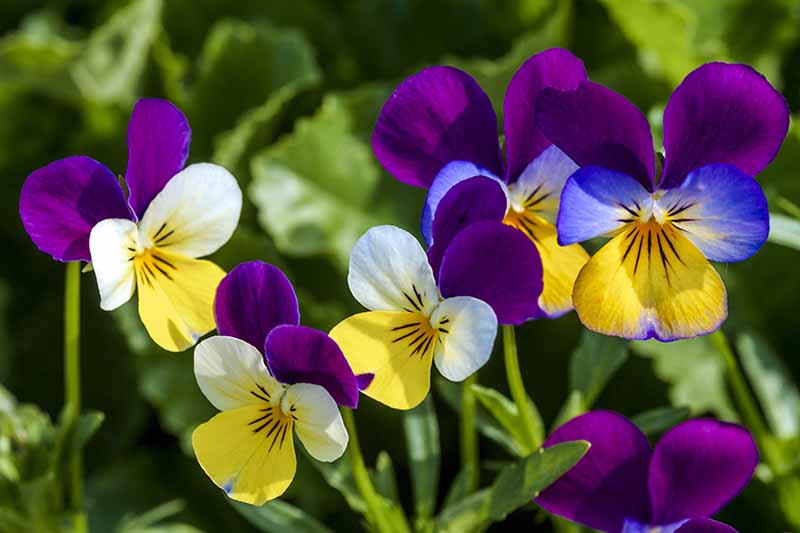
Iris
Iris is a genus of flowering plants that belong to the family Iridaceae. These beautiful flowers are known for their striking colors and intricate patterns, making them a popular choice for gardens and bouquets. However, irises hold much more significance than just being aesthetically pleasing. They have been revered throughout history for their symbolic meanings and associations with various cultures and mythologies.
One of the most prominent meanings associated with irises is eloquence. This is because the name “iris” comes from the Greek word for “rainbow”, which was also the name of the Greek goddess Iris. In Greek mythology, Iris was the messenger of the gods, traveling on rainbows to deliver messages between the gods and mortals. This association with communication and eloquence has carried over to the symbolism of irises, making them a popular flower to give as a gift to express one’s feelings or thoughts.
In addition to eloquence, irises also represent hope, faith, wisdom, and valor. These meanings vary depending on the color of the iris. For example, purple irises specifically represent wisdom, creativity, and passion. They are often seen as a symbol of royalty and respect, as the color purple has long been associated with luxury and nobility. This makes purple irises a popular choice for formal occasions such as weddings and ceremonies.
The symbolism of irises also extends to their shape and structure. The three petals of an iris are said to represent faith, valor, and wisdom, while the three sepals represent the three virtues of love, hope, and faith. This intricate design has made irises a popular subject in art, particularly during the Renaissance period. Artists were fascinated by the beauty and complexity of irises, often incorporating them into their paintings and sculptures.
Purple irises, in particular, have a mystical and imaginative quality to them. They are associated with inner wisdom and inspire creativity. This is why they are often given as gifts to artists and writers, as a symbol of encouragement and inspiration. The deep purple color of these irises also adds to their mystique, evoking a sense of mystery and enchantment.
In conclusion, irises hold a rich history and symbolism that goes beyond their physical beauty. They embody eloquence, hope, faith, wisdom, and valor, with different colors carrying distinct meanings. Purple irises, in particular, represent wisdom, creativity, and passion, and are associated with the Greek goddess Iris, who traveled on rainbows as a messenger of the gods. Whether given as a gift or admired in a garden, irises continue to captivate and inspire people with their intricate beauty and symbolic meanings.
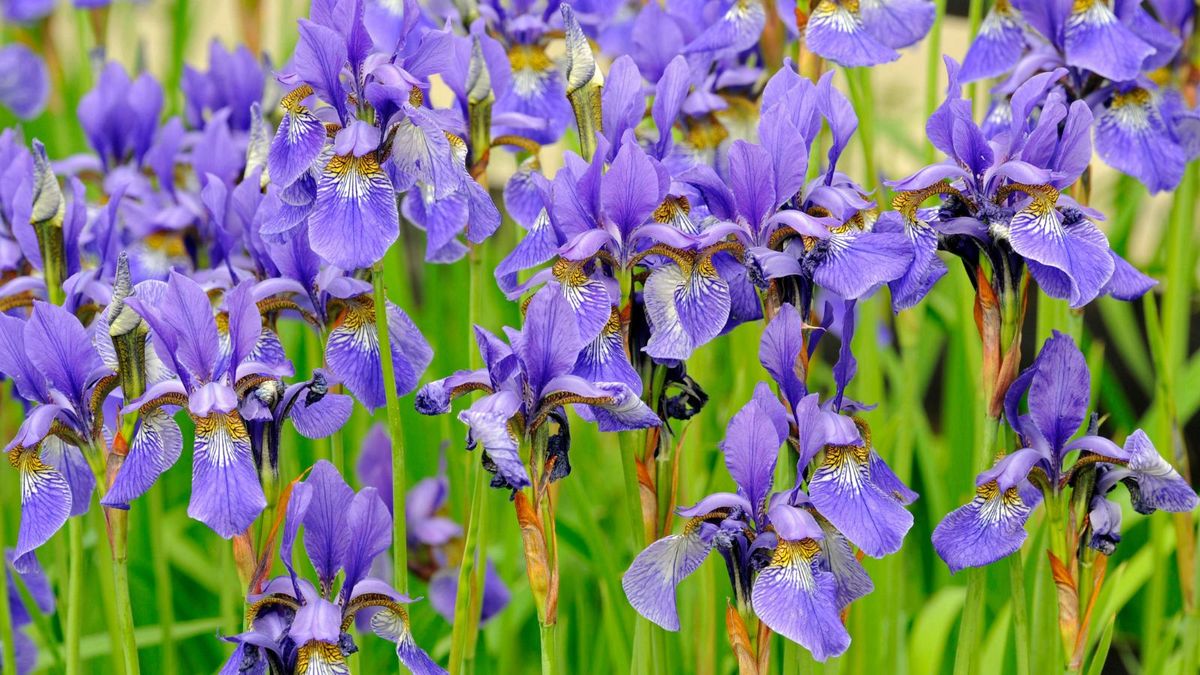
Orchid
Orchids are one of the most beautiful and exotic flowers in the world. They have been admired and cherished for centuries, and their symbolism is deeply rooted in various cultures and traditions. Orchids are not just ordinary flowers, they hold a special meaning and significance that goes beyond their physical appearance.
One of the main meanings associated with orchids is luxury. The delicate and rare beauty of these flowers has long been associated with wealth and opulence. In ancient times, orchids were only found in the homes of the wealthy and powerful, making them a symbol of status and prestige. Even today, orchids are often used in high-end floral arrangements and decorations, adding a touch of elegance and sophistication to any space.
In addition to luxury, orchids also represent beauty and strength. Their intricate and unique petals, vibrant colors, and graceful shape make them a symbol of feminine beauty. In Victorian times, orchid arrangements with dagger-shaped leaves were particularly popular as they represented powerful and alluring femininity. This symbolism still holds true today, as orchids are often given as gifts to express admiration and appreciation for someone’s beauty and strength.
Purple orchids, in particular, have a rich symbolism. They are often associated with royalty and respect, as their deep purple color was once reserved for kings and queens. Purple orchids also convey admiration and flirtation, making them a popular choice for romantic gestures. Additionally, their mysterious and charming appearance adds to their allure, making them a symbol of intrigue and fascination.
In Buddhism, orchids hold a spiritual significance. They are seen as a symbol of devotion and perfection, representing the highest level of spiritual attainment. Orchids are also associated with integrity and purity, making them a popular flower for religious ceremonies and offerings.
Aside from their symbolic meanings, purple orchids are also known for their association with creativity and expression. They are often used in art and literature to represent artistic inspiration and imagination. This is due to their unique and intricate appearance, which is often seen as a reflection of the creative mind.
In conclusion, orchids are much more than just beautiful flowers. They hold a deep symbolism that encompasses luxury, beauty, strength, exoticism, and sensuality. Purple orchids, in particular, represent respect, royalty, admiration, flirtation, mystery, charm, spiritual devotion, perfection, integrity, and creativity. Whether given as a gift or used in decorations, these sophisticated flowers will always convey a sense of refinement and elegance.

Lilac
Lilacs are a type of flowering plant that are known for their beautiful and fragrant blooms. They have been a popular choice for gardens and bouquets for centuries, and hold a special meaning in many cultures and traditions. In this essay, we will explore the symbolism and significance of lilacs, particularly in relation to love and emotions.
Firstly, lilacs are often associated with the first emotions of love. This is because they are seen as a representation of innocent and youthful love, one that is pure and untainted by the complexities of adult relationships. The delicate and delicate nature of lilacs reflects the tender and fragile beginnings of a new love, where everything is still fresh and full of hope.
Furthermore, lilacs also symbolize the joy of youth and childhood innocence. Their vibrant colors and sweet fragrance evoke feelings of nostalgia and remind us of carefree days spent playing and exploring. This connection to childhood can also represent a sense of rebirth or renewal, as if the lilacs are bringing back the purity and simplicity of our younger years.
In Victorian times, lilacs were often given as a token of love and affection. They were seen as a symbol of the first stages of love, when feelings are still innocent and unguarded. This is reflected in the language of flowers, where lilacs signify the first emotions of love – a love that is delicate and vulnerable, yet full of promise and potential.
Aside from their symbolism in love and relationships, lilacs also carry other meanings. They are often associated with confidence, pride, and happiness, perhaps due to their bold and striking appearance. In addition, their sweet fragrance is believed to have healing properties, making them a popular choice for aromatherapy and natural remedies.
When it comes to specific colors of lilacs, purple lilacs hold a special significance. They are said to convey the first emotions of love even more strongly than other colors, and are often associated with spirituality and intuition. This could be due to their deep and rich hue, which is often associated with wisdom and higher consciousness.
In conclusion, lilacs hold a special place in the world of flowers and symbolism. They represent the first emotions of love – a love that is innocent, youthful, and pure. Their delicate nature and sweet fragrance evoke feelings of joy, nostalgia, and healing. Whether given as a gift or enjoyed in a garden, lilacs are a beautiful reminder of the beauty and complexity of human emotions.
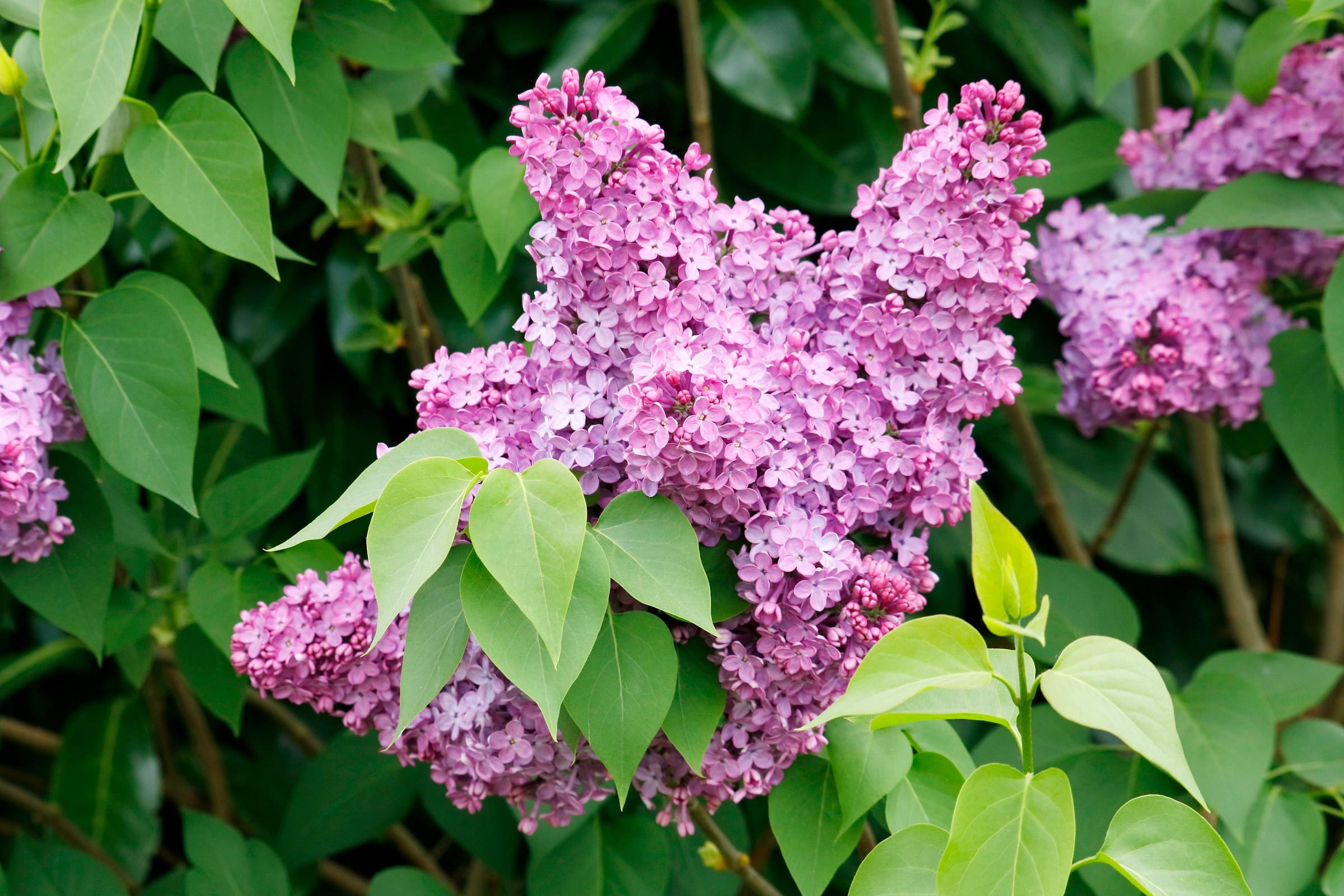
Hyacinth
Hyacinths are beautiful, fragrant flowers that hold significant symbolism and meaning. They are a popular choice for gardens and floral arrangements due to their vibrant colors and pleasant scent. However, beyond their aesthetic appeal, hyacinths also hold deep cultural and historical significance.
One of the most prominent meanings associated with hyacinths is sincerity. This flower represents genuine and honest emotions, making it a popular choice for expressing love, friendship, and gratitude. The name “hyacinth” is derived from the Greek word “hyakinthos,” which means “beloved.” This further emphasizes the flower’s association with sincere and true feelings.
In addition to sincerity, hyacinths also symbolize constancy. This refers to the quality of being faithful and unchanging in one’s emotions and actions. Hyacinths are often given as gifts to express long-lasting love and loyalty. They are also associated with deep attachment and devotion, making them a popular choice for wedding bouquets and anniversary gifts.
Another significant meaning associated with hyacinths is rebirth or new beginnings. This symbolism stems from the flower’s ability to bloom in early spring, signifying the end of winter and the start of a new season. In this sense, hyacinths represent hope, growth, and renewal. They are often given as gifts to celebrate new beginnings such as graduations, job promotions, or the birth of a child.
While hyacinths, in general, carry these positive meanings, the color of the flower can also influence its symbolism. Purple hyacinths, in particular, hold a deeper and more solemn significance. These flowers convey a request for forgiveness or an apology. They represent regret and sorrow, making them a suitable choice for expressing remorse or asking for forgiveness.
The association between purple hyacinths and regret stems from a Greek myth about a young man named Hyacinthus. According to the legend, Hyacinthus was a beautiful youth who caught the attention of the god Apollo. However, Apollo’s jealousy caused him to accidentally kill Hyacinthus with a discus. From Hyacinthus’ blood, a purple flower bloomed, and Apollo named it after him as a symbol of his sorrow and regret.
In this way, purple hyacinths carry a powerful message of remorse and sorrow. They are often given as a gesture of apology or to express deep regret for past actions. These flowers can also be used to honor someone who has passed away, as they represent grief and mourning.
In conclusion, hyacinths hold multiple meanings and symbolism, depending on their color. In general, they represent sincerity, constancy, and rebirth. However, purple hyacinths carry a more solemn message of regret and ask for forgiveness. Whether given as a gift or used in floral arrangements, hyacinths are a beautiful and meaningful choice that can convey a range of emotions and sentiments.
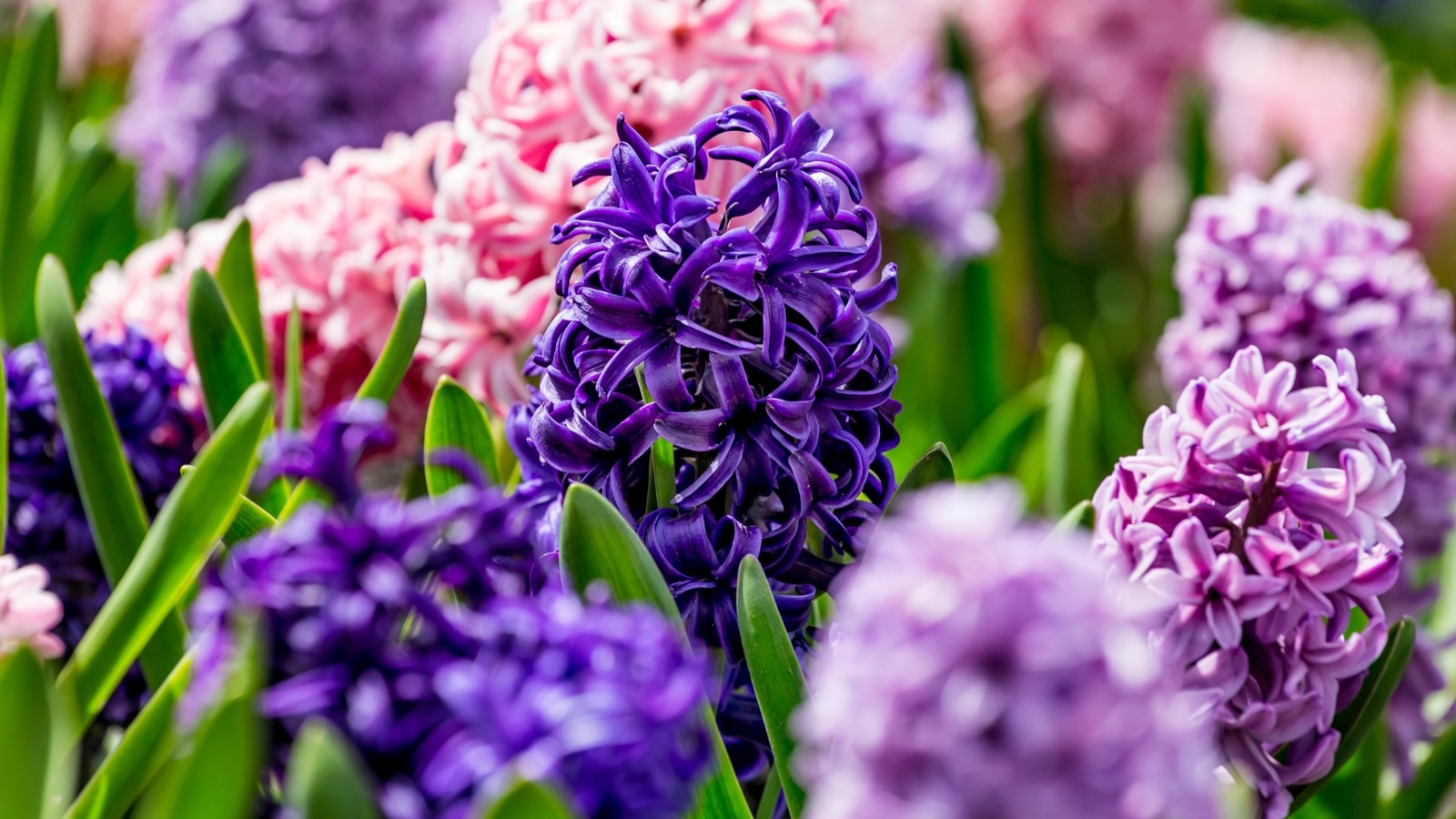
Conclusion
The rich, mystical color of purple flowers has captivated people for millennia. Their unusual hues have come to signify nobility, spirituality, imagination, and love. Lavender conveys devotion, irises mean wisdom, and lilacs express first emotions of romance. Purple evokes fantasy and creativity through its associations with magic and intuition. Hyacinths remind us of the importance of remorse and humility. With so many meanings contained in a spectrum of purple blooms, it is no wonder they have inspired celebrated works of art, poetry, and literature across human cultures. When we gift purple flowers, we share in this visual language imbued with symbolism, sentiment, and significance.

We’re Emma Carole Paradis and Kimberly Carole, the owners and designers of Impeccable Nest, based in Bedford, New Hampshire. A mother-daughter team with a love of design. Originally from Manhattan Beach, California, now based in Bedford, New Hampshire, we bring a Southern California cool and New England tradition to our design. Not only do we work together…we also live together in a multi-generational home…and a home that they are known to design for others.
